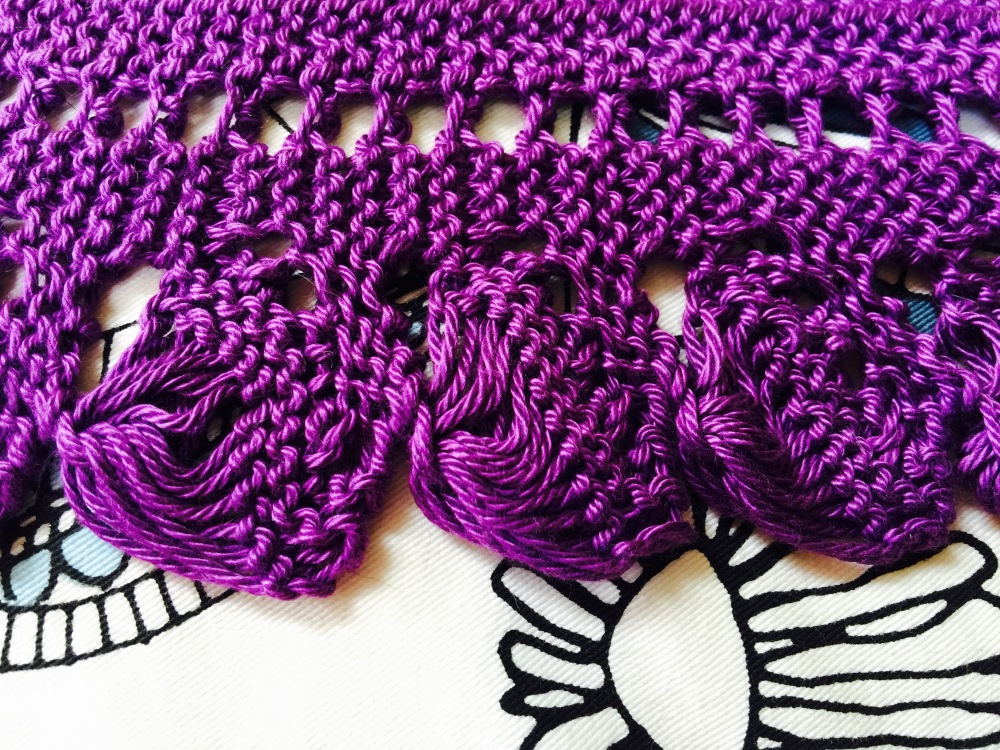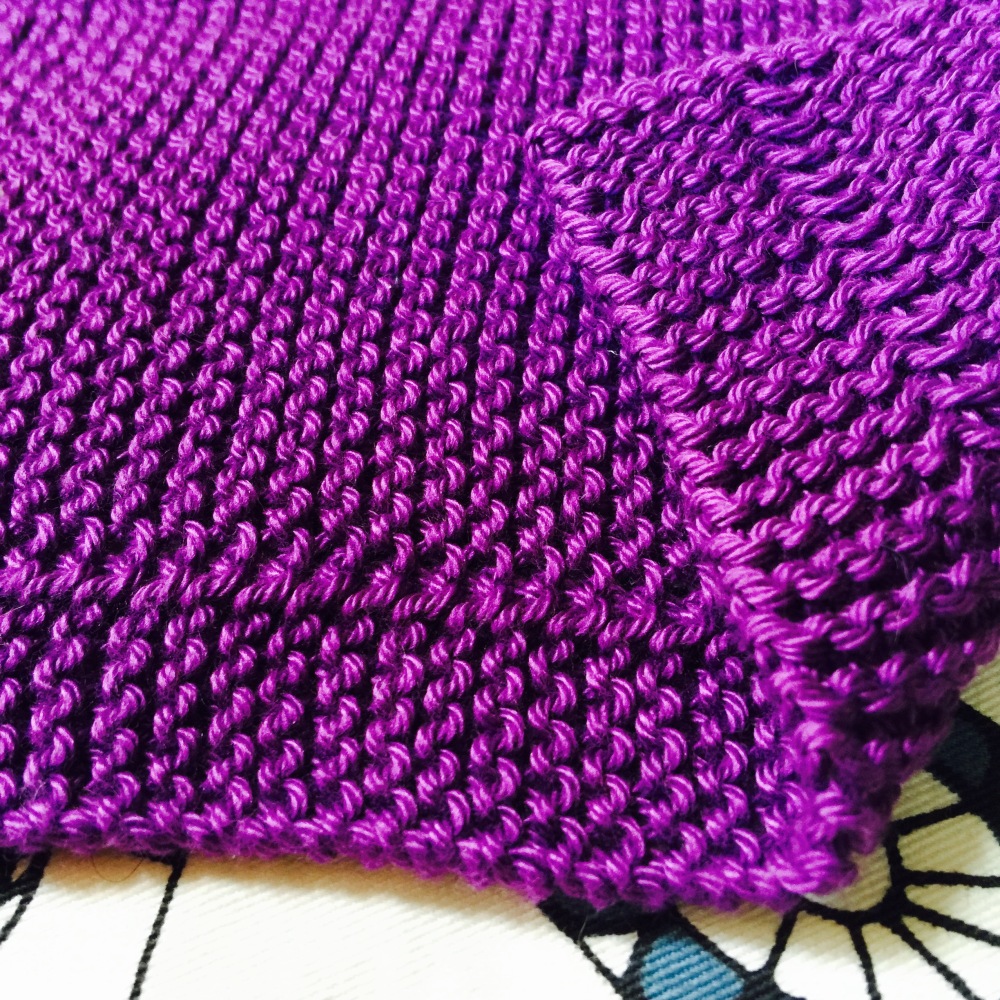I am pleased as punch (where did that saying come from?) to report that my WTF, Stripes? socks are officially done! They were such a rewarding project because of both the amount I learned and the awesome finished product. I’m going to do this a little differently than my usual FO spotlight format as this project has a rather complicated timeline.
The Beginning
For this pair of socks, I wanted to continue with my overall sock knitting goals: learn new techniques and sock constructions and get closer to finding a sock pattern that fits me well. This pattern was given to me by Carol at just the right time: I was done with my last pair and needed something new, and it incorporated new-to-me techniques. Plus, it just looked really cool! So I picked out my yarn, Regia 4-fädig Mini Ringel Color, and got started. Because the pattern was a gift and I used yarn from my freecycle score, this project cost me only my time.
The pattern, Susan B. Anderson‘s Smooth Operator Socks, is designed to make cuff-down socks with self-striping yarn. The pattern incorporates a modified afterthought heel which allows the stripe sequence to continue uninterrupted through the ankle and instep. The heel modifications allow for a better fit as apparently afterthought heels are often too shallow. I had already decided I wanted my next pair to be toe-up. However, this pattern was easily modified so that didn’t present any problems. I also wanted to do them TAAT. When I do them one at a time, I tend to knit the second sock much tighter. Doing them at the same time would help me keep my gauge more consistent.
I learned from my last pair of socks that I don’t always get 8 sts/” on US1s. For this pair, I went up to US2s and checked my gauge early on. I got around 8.5 sts/”, which was fine. I chose to knit the 72 st size. I used Judy’s Magic Cast On for the toes and got going. Since I was using a pattern specifically designed to show off stripes, I figured I’d try to make my socks match. I started each at (what I thought was) the exact same spot in the color sequence. I actually kind of prefer fraternal twin socks, but I wanted to learn new things!
The Process
Since I was doing toe-up instead of cuff-down, I needed to choose an increase to use for the toes. I initially did left and right raised increases, but I didn’t like the way they looked. I ripped them out and restarted, using m1r and m1l instead. I liked that much better. I wasn’t sure how long to knit the foot before adding waste yarn for the heel. I estimated two inches less than my foot length. After knitting about an inch past the waste yarn, I went back and did the heels…then tried the socks on. And, they were just too big…by about an inch!

Note the extra length at both the toe and the heel. And the Ms. Potato Head in the background.
I deliberated for a bit, but ultimately ripped out the inch or so of leg, the heels, and an inch and a half of the foot. I re-added my waste yarn and kept going. This time, after I did the heels, the fit was perfect! So, I learned that leaving about 3.5″ for the afterthought heel works well for me.
I made a couple of modifications to the heels the second time around. I started the decreases one round sooner and didn’t decrease as much. I only decreased to 40 sts instead of 28. I decided on this just by trying the sock on every few rows. I guess my heel isn’t as pointy as most! After those modifications, I was much happier with the fit.

Better, right?
Another thing I did differently on the heels the second time around has to do with how I picked up stitches on the corners of the heel openings. It’s a long story but, suffice it to say, I got much smaller/nonexistent holes. What little gap remained I was able to close up while weaving in the ends.
If you look closely at the two pics above, you’ll notice that they are not identical twins. Even though I started at identical spots in the yarn’s stripe sequence, they didn’t stay identical for long! They each started out with two stripes each of orange, yellow, red and pink. Then, things got a little random. So much for planning! In any case, I just carried on knitting the leg and cuff. I kept going as long as I could in an attempt to use up as much yarn as possible. Interestingly enough, the stripes started matching up again at the top! So they start and end with two stripes each of orange, yellow, red and pink. The only difference at the end was the very last stripe, which made an appearance halfway through each bind off. One was yellow and the other orange. I actually ran out of yarn while binding off one of the socks, so I russian joined some yarn on. I didn’t want to pull a row out and redo it! I like having the extra pop of color on the bind off and, since I used JSSBO, it would have been really irritating to undo.
The End
All told, I used 395 yards of yarn. The legs/cuffs are about 8.5″ long. I like the yarn a lot–the stripes and colors are awesome, and it’s not too coarse for sock yarn. I will give them a wash and a soak and they will probably soften up a bit. I cast on with US1s for a neater toe and switched to US2s on the second or third round. I used Addi Sock Rockets with 40″ cables and knitted them on magic loop.
As for the pattern? I would highly recommend it for first time sock knitters and 100th time sock knitters. There are a number of little tips and tricks included that really make the socks turn out smooth and streamlined, including a modified Kitchener stitch and sleek decreases. Susan posted on her rav group recently that she’s actually come up with some more tricks to make the pattern even better, and she’ll be releasing them sometime next week. The pattern has many clear and detailed pictures and includes links to video tutorials for more information. In particular, there’s a neat trick for picking up gusset corner stitches that I will probably use any time I need to pick up heel or gusset stitches. If you’re at all on the fence, the pattern is still discounted and her KAL is still going on.
Last, but not least:
The Pretty

Sorry (not sorry) for the giant pics. I couldn’t help myself.

Afterthought heels look funny! They’re really just extra toes.

Look, Ma! No holes!

Pretty, pretty toes!
Get ready for even more pic spam!!!

Image copyright Callandra S. Cook




Image copyright Callandra S. Cook
Clearly, I love pretty much everything about these socks!
Are you doing any sock knitting? Feel free to post about it on Thursdays and link up with the group! Also, you can share your projects on Instagram with the tag #thursdaysockalong. Check out my fellow Thursday sock knitters here:



















































































